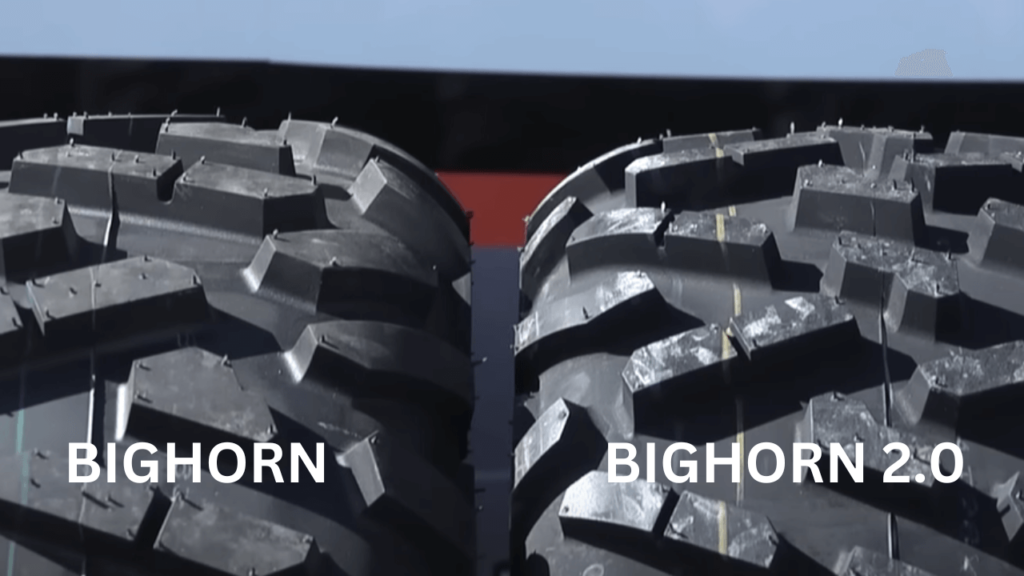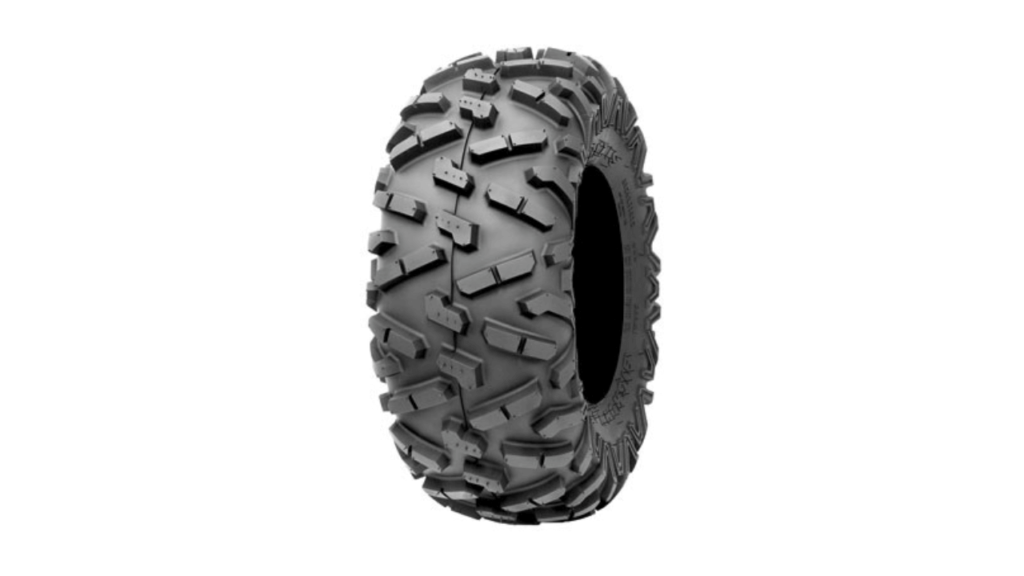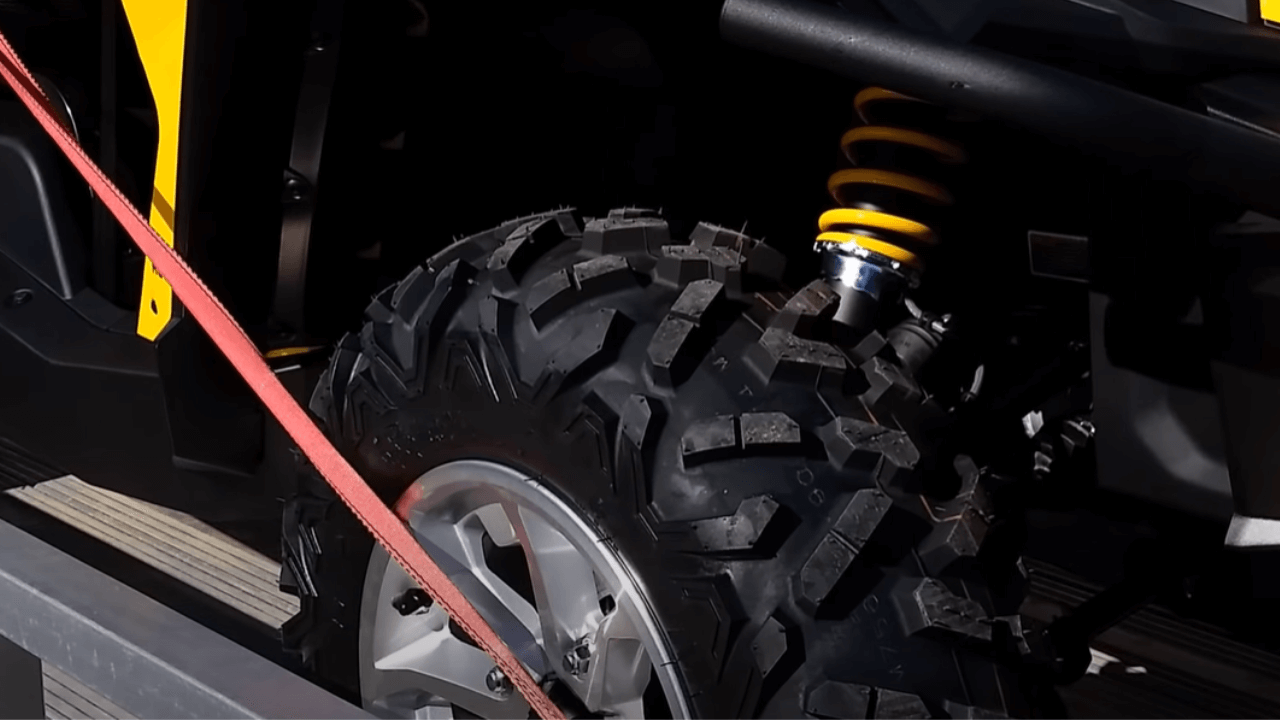This introduction lays the groundwork for a thorough examination of the Maxxis Bighorn 2.0 Radial Tire, which has garnered praise for its performance in off-road excursions. The Bighorn 2.0, developed as an evolution of the original Bighorn, boasts improved performance, reduced weight, and enhanced durability. This tire is ideal for off-road enthusiasts engaged in leisure or competitive activities, as it embodies the essential qualities required for navigating a range of rugged terrains.
It is imperative to note that the Maxxis Bighorn 2.0 is specifically a radial off-road tire, distinguishing it from other types of off-road tires. Unlike bias-ply tires, radial tires are constructed using a different technique, facilitating a smoother ride and longer tread life. The Bighorn 2.0 is engineered to perform exceptionally well in challenging environments, including mud, rocks, deserts, and snow. The wide range of sizes further exemplifies the tire’s versatility it is available in. This review delves into the features and performance characteristics that have contributed to the popularity of the Maxxis Bighorn 2.0 Radial Tire among off-road enthusiasts.

Key Features of Maxxis Bighorn Radial Tire

The primary feature of the Bighorn 2.0 is that it is lighter than its predecessor, which significantly impacts the tire’s handling and performance. A lighter tire can considerably reduce unsprung weight, improving handling, more responsive suspension, and better fuel economy.
Another key attribute that sets the Bighorn 2.0 apart is its radial construction. Sidewalls with radial construction are more flexible than those with bias-ply structures. This flexibility makes it an excellent companion for off-road adventures, as it ensures a smoother and more comfortable ride, especially on uneven terrain. This is essential for anyone seeking a comfortable experience while maintaining energy levels on challenging terrains.
One of the most prominent features of the Bighorn 2.0 is its non-directional tread pattern, inherited from the original Bighorn. This tread pattern is advantageous for off-roaders as it provides consistent grip in all directions, vital for traversing challenging terrains. Furthermore, the non-directional design enables tire rotation in any sequence, which can contribute to more even tread wear and an extended tire lifespan.
The Bighorn 2.0 was specifically engineered to deliver outstanding performance on various surfaces. It is an incredibly versatile off-road tire, excelling in navigating deserts, mud, and rocky terrain. The Bighorn 2.0 has proven its capability in traversing dunes and rocky trails.
The impressive durability of the Bighorn 2.0 should be noticed. Thanks to its robust design and high-quality components, the tire can withstand the rigors of off-road trails. A flat tire won’t interrupt your adventure, as the Bighorn 2.0 is resilient enough to resist punctures and wear that would sideline lesser tires. This durability is further bolstered by reinforced sidewalls, which offer protection against abrasions and punctures during the journey. These features combine to produce a tire that delivers reliable performance, exceptional longevity, and a smooth ride, even on the roughest terrains.
Review of Maxxis Bighorn 2.0 Radial Tire

In the Performance Analysis section, we left no stone unturned as we put the Maxxis Bighorn 2.0 Radial Tire through its paces in various real-world scenarios. Our test vehicle was fully loaded, and we embarked on a week-long adventure that included a mix of off-road trails and highway driving to understand the essence of these tires truly.
We began by tackling a challenging muddy trail. During our testing, the Bighorn 2.0 surprised us with its tenacity. The non-directional tread pattern, which we were initially skeptical of, proved itself admirably. The tires maintained grip and we powered through areas where we had seen others struggle. When we encountered rocky terrain, this is where the Bighorn 2.0 came into its element. The flexible sidewalls and robust construction seemed tailor-made for this environment. As we crawled over rocks and boulders, the tires confirmed and gripped with awe-inspiring surefootedness.
Our journey led us through sandy deserts, and here again, the Maxxis Bighorn 2.0 Radial Tires excelled. We did not experience the usual digging or sinking; instead, the wide footprint allowed us to glide over the sand. This was not just a tire going through the motions; it felt purpose-built, with a deep understanding of what an off-road enthusiast needs.
As for highway performance, we kept our expectations in check, knowing that these are primarily off-road tires. However, the Bighorn 2.0 delivered more than just a satisfactory performance. Our testing revealed a surprisingly composed and smooth ride. What stood out was the tire noise – it was significantly quieter than we had anticipated for tires with such aggressive treads. When the skies opened up, and the highways became wet, we felt a slight decrease in confidence. The tires were handled decently but, as expected, couldn’t match the performance of dedicated road tires under these conditions.
A significant portion of our analysis was aimed at evaluating the durability of these tires. We exposed them to the rigors of unforgiving terrains, and they quickly handled it. The rugged construction and added sidewall protection make this tire a reliable companion for those venturing into the unknown.
We must tip our hats to the design team at Maxxis. The Bighorn 2.0 Radial Tire is not just a product; it feels like an experience crafted with an understanding of the off-road world. From the muddy beginnings to the rocky challenges and even the smooth highways in between, this tire was a partner that shared our enthusiasm for adventure. Our testing was extensive, and the Bighorn 2.0 didn’t just pass but excelled with flying colors. If you’re searching for a formidable ally for your off-road escapades, this tire deserves serious consideration.
What other UTV enthusiasts about Maxxis Bighorn 2.0 Radial Tire


Pros and cons
| Pros | Cons |
| Excellent grip in muddy conditions | Reduced confidence in wet highway conditions |
| Flexible sidewalls for rocky terrains | Not as good as dedicated road tires for on-road driving |
| Robust construction for durability | |
| Conforms and grips rocks effectively | |
| Performs well in sandy and desert conditions with a wide footprint | |
| Smooth and composed ride on highways | |
| Significantly lower tire noise than expected for aggressive treads | |
| High durability and ruggedness in unforgiving terrains | |
| Added sidewall protection for reliability | |
| Tailored for the needs of off-road enthusiasts |
Comparison of Maxxis Bighorn 2.0 Radial Tire and Tusk Terrabite Radial Tire

The Maxxis Bighorn 2.0 Radial Tire and the Tusk Terrabite Radial Tire have carved a niche in off-road tires. To assist you in making an informed decision, we will compare their features and performances in this review.
The Maxxis Bighorn 2.0 Radial Tire is a lighter-weight variant of the original. It boasts a non-directional tread pattern, renowned for providing excellent traction on various surfaces, including mud, pebbles, and sand. Riders who seek comfort without sacrificing performance appreciate the smooth ride afforded by its radial construction. Due to its notably flexible sidewalls, the Bighorn 2.0 can adapt to rocky terrains, ensuring enhanced traction. Moreover, it is known for having additional sidewall protection and durability on the trails.
On the other hand, the Tusk Terrabite Radial Tire emerges as a formidable contender in the off-road market. Compared to the Bighorn 2.0, this tire has a slightly more aggressive and directional tread design. It performs exceptionally well on hardpack surfaces and rough terrain. The radial construction of the Bighorn 2.0 is akin to that of the Terrabite, contributing to a smooth ride. However, the Terrabite’s sidewalls are somewhat stiffer, which some riders prefer for increased stability and puncture resistance.
FAQ About Maxxis Bighorn 2.0 Radial Tire
Maxxis Bighorn 2.0 Radial Tire a lightweight tire?
Yes, the Maxxis Bighorn 2.0 is a lightweight version of the original. This reduction in weight plays a significant role in its performance and efficiency. A lighter tire often means better responsiveness and handling in off-road conditions, allowing the vehicle to maneuver more effortlessly over rough terrain.
Can I use the Maxxis Bighorn 2.0 Radial Tire in snowy conditions?
The Maxxis Bighorn 2.0 Radial Tire can be used in light to moderate snow conditions. Its tread pattern provides decent traction on snow. However, using tires specifically designed for winter conditions, heavy snow, or icy conditions is advisable.
How does the radial construction of the Maxxis Bighorn 2.0 Radial Tire benefit performance?
The radial construction of the Maxxis Bighorn 2.0 is a pivotal aspect that substantially benefits its performance. Radial construction means that the internal tire plies are aligned radially from the center of the tire. This configuration makes the sidewalls more flexible, a boon in off-road conditions.

Conclusion
The Maxxis Bighorn 2.0 Radial Tire is a formidable contender in off-road tires. Its adaptability across diverse terrains is a testament to the meticulous engineering and design that went into its creation. The non-directional tread pattern is beneficial and a distinct advantage when negotiating rugged terrains such as rocky paths or muddy trails. Owing to its radial construction and flexible sidewalls, the tire delivers a comfortable ride without compromising durability, which is remarkable.
The Bighorn 2.0 is a reliable partner for off-road enthusiasts who often grapple with the forces of nature. With its vast footprint and deep lugs, it navigates dunes and swampy terrain easily, while its robust design safeguards against the jagged edges of rocks. For those who need to traverse paved roads to reach their off-road destinations, the tire’s ability to provide a smoother-than-expected ride on highways is a bonus.
The Maxxis Bighorn 2.0 performs commendably and earns high marks for durability. Crafted from premium materials with added sidewall protection, this tire is built to withstand the test of time.
This is crucial for adventurers, as they often find themselves in demanding environments where the reliability of their equipment is paramount.

